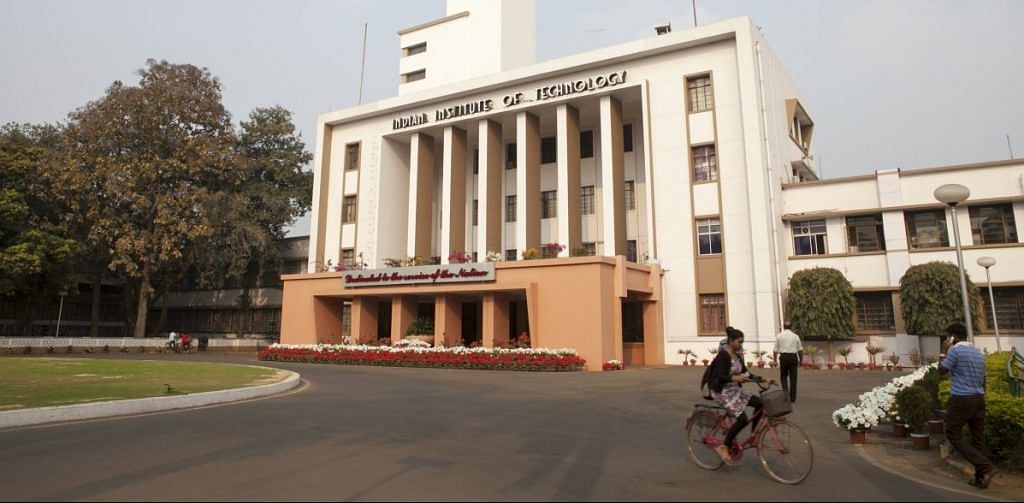The remaining 97% of students attend 865 higher educational institutes in the country and get less than half the government funds.
New Delhi: More than 50 per cent of the central government’s funds for higher education, in the last three years, has gone to just 3 per cent of the country’s students — those who study at the likes of the Indian Institutes of Technology (IITs), Indian Institutes of Management (IIMs) and National Institutes of Technology (NITs).
Such is the skewed government attention that the remaining 97 per cent of the students attend 865 higher educational institutes in the country and of these, just about half are public funded. And together, they receive less than half the total government funds.
Even the prestigious Indian Institute of Science (IISc) and the 10 IISERs are in this category.
On the other hand, there are just 97 IITs, NITs, IIMs and Indian Institutes of Information Technology (IIITs) in all.
Data shared by the Ministry of Human Resource Development (HRD) in Parliament recently shows the single biggest chunk of government funds — 26.96 per cent of the total — has gone to the IITs, which have just 1.18 per cent of the students; 17.99 per cent has gone to NITs, where 1.37 per cent of the students study; 3.35 per cent has gone to the IIMs, which have 0.12 per cent of the students and 2.28 per cent of the budget has gone to the IIITs, where 0.05 per cent students study.
The remaining 48.9 per cent of the higher education funds have gone to the 865 institutions, which have 97.4 per cent of the country’s students.
Educationists and policy-makers blame the lop-sided approach on the government, having created a kind of hierarchy within the education system. Others say that the Centre has not kept up with the growing number of institutes.
Also read: IIT Delhi’s older alumni are leaving wills in the name of their alma mater
‘Unequal, unfair’
While the government data is for just three years, former HRD minister Pallam Raju, who headed the ministry under the UPA government, said the skewed funding pattern has been the norm for years.
“Initially the number of higher education institutions was very little and IITs were recognised as premier institutions. So, in order to keep up their competence, funding had to be proportionate, whereas, central universities started growing in terms of disciplines and the funds that go to each department started going down,” Raju told ThePrint.
“Simultaneously, we did not work on an alternate mechanism to run these institutions and that is what caused the problem.”
Former chairman of the University Grants Commission (UGC), Sukhdeo Thorat, who has seen government’s policies very closely, criticised the “hierarchical” system.
“Funding is being granted to higher education institutions in a hierarchy system. Some institutions are being given more funds while others are being left high and dry. Equal funding should be given to all and then the government should see how these institutions perform,” Thorat said.
Another official who has worked with the government on education policy, said, “When it comes to funding, state universities are left high and dry. Most of them are now running on a self-financing mode. How can we expect the public education system to improve in such a scenario?”
The official also said that the IITs and NITs get huge amounts of money as the government only wanted Indian institutions to figure in world rankings.
“Nobody wants to focus on improving the system at the base. I am not comfortable with the approach where the government is trying to give more funding to some, while under-funding the others. It is like a caste system or hierarchy. The system as a whole should be funded,” he added.
IITs, IIMs the winners
Apart from funding, the IITs and IIMs also receive the maximum government attention in terms of policy-making.
Two of the IITs — Bombay and Delhi — recently found a place in the list of Institutes of Eminence. They are now eligible for more grants to catapult them to world rankings.
Before the proposal of the Institutes of Eminence was finalised, the government had floated “Project Vishwajeet”, which was also focused on providing more grants to IITs as part of efforts to develop them into world-class institutions.
The government’s other favourite child, the IIMs, also receive a lot of attention. For one, they are autonomous. This allows them to charge fees on their own discretion, hire faculty and manage themselves without any interference from the government.
Nuclear scientist Anil Kakodkar, who in 2011 headed a panel set up to upgrade the quality of research and further development of IITs, believes that “equalising the budget” isn’t the solution.
“There is a need to increase the overall standard of higher education institutes but the way to look at it is not to equalise the budget,” he said.
“There is a huge demographic dividend in the country and if you want to leverage that demographic dividend you must create value out of the capability of the youth, that in turn can be done by intervening in higher education,” he added.
He pointed to what he said is the problem — that the country spends way too little of its GDP on education. “Instead of looking at the amount of money that we are spending on various institutions, we should look at India’s overall spending on education and what is the percentage of our GDP that we are spending on education,” Kakodar said.
